Go for Broke! (1951 film)
7 /10 1 Votes
Duration Country United States | 6.8/10 IMDb Genre Drama, History, War Writer Robert Pirosh Language English | |||||||||||||||||||||||||||||||||
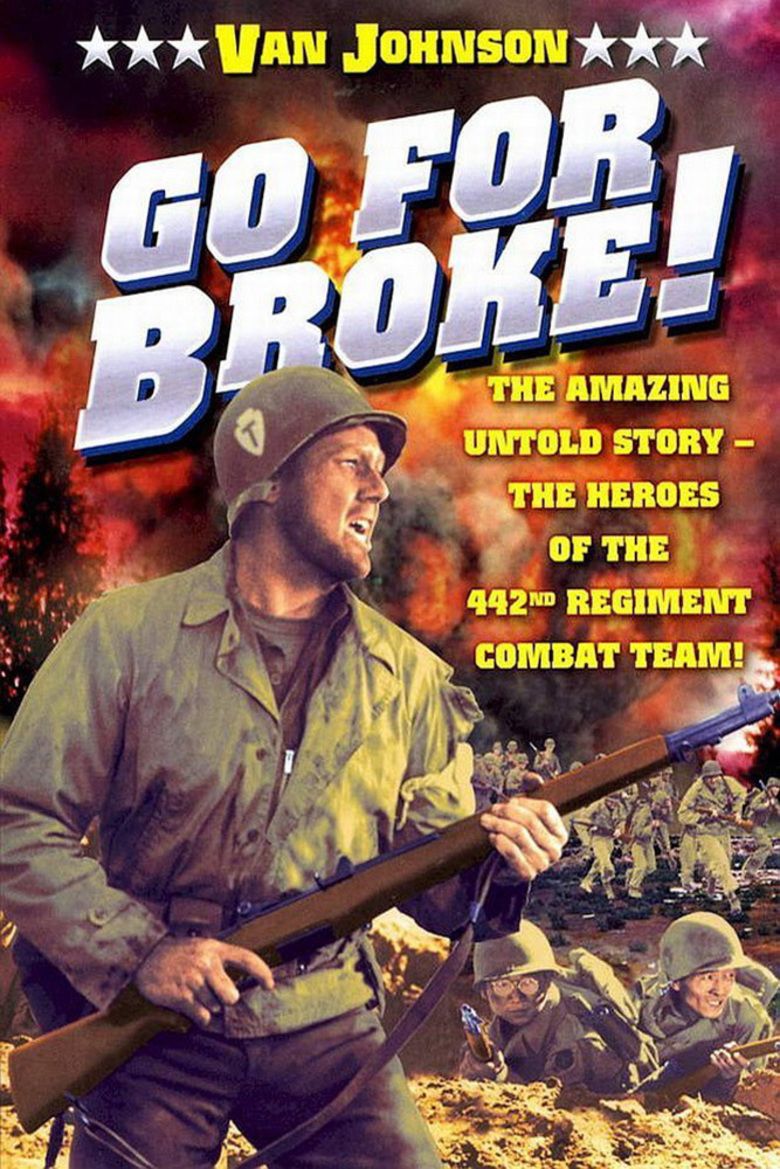 | ||||||||||||||||||||||||||||||||||
Release date May 24, 1951 (1951-05-24) (New York City) Cast (Lt. Michael Grayson), (Sam), George Miki (Chick), Akira Fukunaga (Frank), Ken K. Okamoto (Kaz), Henry Oyasato (Ohhara)Similar movies Fury , Terminator Salvation , Captain America: The First Avenger , The Hunger Games: Catching Fire , Star Wars: Episode II - Attack of the Clones , Saving Private Ryan Tagline The story of Japanese-American soldiers who fought in Europe during World War II | ||||||||||||||||||||||||||||||||||
Go for broke 1951 full movie captioned
Go for Broke! is a 1951 war film directed by Robert Pirosh, produced by Dore Schary and featured Van Johnson in the starring role, as well as several veterans of the 442nd Regimental Combat Team, Henry Nakamura, Warner Anderson, and Don Haggerty amongst its large cast.
Contents

The film dramatizes the real-life story of the 442nd, which was composed of Nisei (second-generation Americans born of Japanese parents) soldiers.

Fighting in the European theater during World War II, this unit became the most heavily decorated unit for its size and length of service in the history of the United States Army, as well as one of the units with the highest casualty rates. This film is a Hollywood rarity for its era in that it features Asian Americans in a positive light, highlighting the wartime efforts of Japanese Americans on behalf of their country even while that same country interned their families in camps.
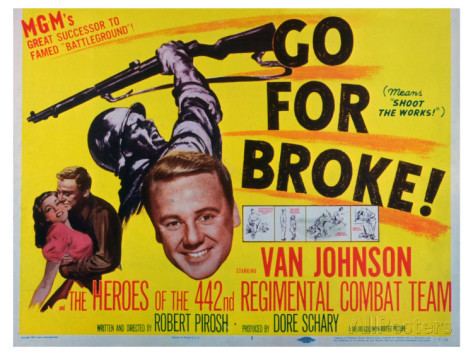
As with his earlier film script Battleground, in which Van Johnson also starred, writer-director Robert Pirosh focuses on the average squad member, mixing humor with pathos, while accurately detailing equipment and tactics used by American infantry in World War II. The contrast of reality versus public relations, the hardships of field life on the line, and the reality of high casualty rates are accurately portrayed with a minimum of heroics.
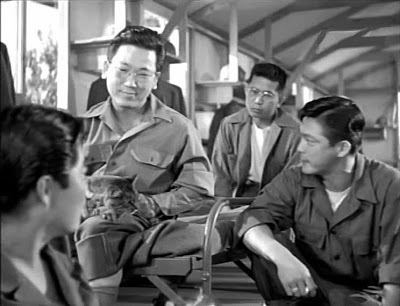
In 1979, the film entered the public domain (in the USA) due to the claimants' failure to renew its copyright registration in the 28th year after publication.
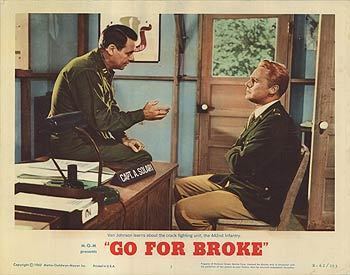
Plot

The film begins in 1943 at Camp Shelby, Mississippi, with newly commissioned Lt. Michael Grayson (Johnson) reporting for duty with the 442nd, then in training. He discovers that he has been sent to a unit composed of Nisei; he had expected to return to the U.S. 36th Infantry Division, a Texas National Guard unit with which he had served as an enlisted man. Having joined the war to fight against the Japanese, he is disturbed to find he is expected to fight alongside people whom he sees as Japanese, rather than Americans. From the outset, Grayson runs his platoon rather harshly, including an almost martinet-like insistence upon the strict observance of regulations.
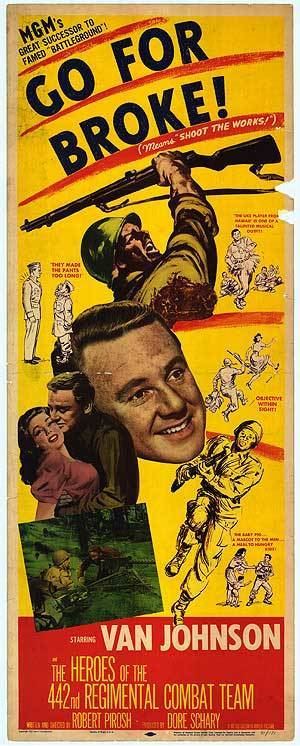
He (and the audience) learn that "Go for broke" is a pidgin phrase (used in Hawaii) meaning to gamble everything, to "shoot the works"—to risk "going broke" or bankruptcy. Eventually Grayson also learns the meaning of the frequently repeated expletive Baka tare, which, loosely translated, means "very stupid."
There is only brief mention of the internment camps from which most of the men have come, but throughout the film there are references to the camps. There are also a few brief references to the distinctions between the Nisei from Hawaii ("Buta-heads") and those from the mainland ("Katonks"). While Buta-heads (the phrase later devolved to "Buddha-Heads") were a key part of the Hawaiian economy and society, Katonks were largely distrusted and disliked by their neighbors.
Arriving in Italy, the unit is joined by the 100th Battalion, the Nisei unit formed in Hawaii before the 442nd was created on the mainland. The troops of the 100th are seasoned veterans and the new arrivals look to them for advice. On the march to the front lines, Grayson inadvertently gets left behind while fraternizing with a signorina, but when he catches up he finds that his platoon has covered for him during an inspection of their positions by the colonel.
Through fighting in Italy and France, Grayson eventually comes to respect the Nisei, and his bigotry fades. Eventually he is transferred back to his old unit, the 36th as a liaison—over his objections—when the 442nd is attached to the larger unit. As he has misjudged the Nisei, they have misjudged Grayson. They eventually learn that he has defended them against bigotry, even getting into a fistfight with an old friend of his from the 36th who had insulted them.
The climax of the movie comes with the "Buddha-heads'" famous rescue of the "Lost Battalion", after the 36th is surrounded by the German army. Then comes their return home, and the award of the eighth Presidential Unit Citation.
Cast
There is archive footage of Gen. Mark Clark, and Pres. Truman presenting the unit citation.
Reception
According to MGM records the film made $2,531,000 in the US and Canada and $806,000 overseas, resulting in a profit of $761,000.
Honors
The story and screenplay by Robert Pirosh were nominated for an Academy Award in 1951.
References
Go for Broke! (1951 film) WikipediaGo for Broke! (1951 film) IMDb Go for Broke! (1951 film) themoviedb.org
